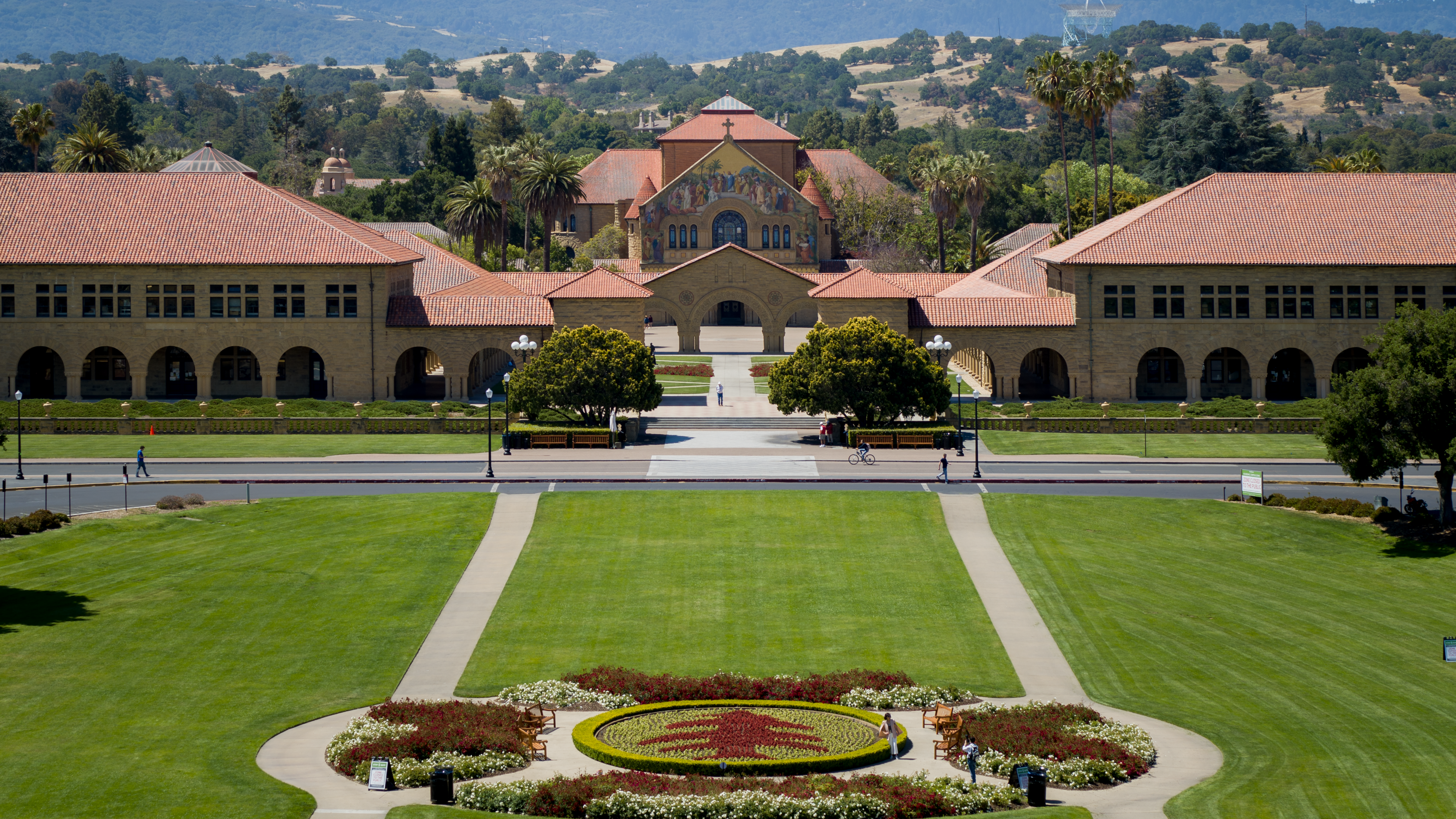A University of High Degree

When Leland Stanford Junior University opened to students on October 1, 1891, founders Jane and Leland Stanford declared it would be a “university of high degree,” producing cultured and useful citizens for the benefit of society. The university was untraditional from the outset. It was coeducational when many were not, and nonsectarian when most had a religious affiliation. Until 1920, Stanford was tuition-free, establishing what would become an enduring commitment to accessibility for promising students of all backgrounds.
Palm Drive, Stanford’s grand main entry, welcomes students and visitors to a university that has become a world leader in teaching, research, and innovation, known for its entrepreneurial spirit and discoveries that have impacted millions of lives.
Stanford sits on the ancestral land of the Muwekma Ohlone Tribe. This land was and continues to be of great importance to the Ohlone people. Consistent with our values of community and inclusion, we have a responsibility to acknowledge, honor, and make visible the university’s relationship to Native peoples.
Stanford’s Land Acknowledgment Statement

Distinguished Faculty
Stanford’s research outcomes reflect the expertise, creativity, and initiative of its faculty, who are leaders in their fields. Their accomplishments are recognized across the disciplines with awards including the Nobel Prize, MacArthur Fellowship, Pulitzer Prize, Fields Medal, and Presidential Medal of Freedom. Hundreds hold membership in national and international academies.

First Students
Administrators had anticipated 250 registrants upon opening, but the inaugural year drew 555 undergraduate and graduate students, including 255 first-year, 116 transfers, and 37 graduate students. All who qualified by exam were admitted. Today, Stanford has seven schools where students can explore over 60 fields of undergraduate studies and nearly 200 graduate programs.

